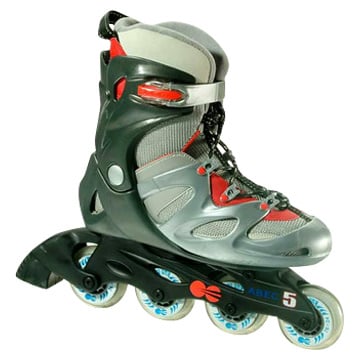Fast and Easy Science Fair Projects: Walls Don't Move

Newton's 3rd: Action and Reaction
Purpose: Understanding the Physics concept of work through force and distance.
Overview: Newton's third law of Motion explains that if one body exerts a force on a second body (action), the second body exerts and equal force in the opposite direction (reaction), back to the first body. In other words: For every action there is an equal and opposite reaction. Imagine yourself and a friend floating in a swimming pool, in two liner tubes touching each other. If you push your friend's tube away, the force will push back and yours will move, too. Astronauts in orbiting spacecraft push against walls in order to float backward. Work, in Physics, is defined as: work = force x distance. Since anything is multiplied by zero is zero, if either force or distance is zero, then work equals zero.
Hypothesis: According to the Physics definition of work, it is possible that no work is done, no matter how much effort is used.
You need:
- Roller or in-line skates
- Flat surface and wall
Procedure: Wearing shoes that won't slip, stand facing a wall and push on it as hard as you can. The wall doesn't move, and you don't move. Force x distance = zero. No work was done (no distance, no work). Even if you pushed long enough to work up a sweat and you are out of breath from trying, technically no work was done because nothing moved. Although effort or force was applied, no work was accomplished!
Now, put on roller or in-line skates. Face the wall and push against it. Again, the wall doesn't move, but a force equal and opposite to yours pushes back, causing you to roll away from the wall. The wheels reduced friction, you rolled...and work was done!
Results and Conclusion: Write down the results of your experiment. Come to a conclusion as to whether or not your hypothesis was correct.
Something more: Measure the distance you traveled from the wall by pushing on it. If you push harder (apply more force), does the distance increase? Is the distance you travel in relation to the force you apply?
Thanks for reading this one! Hope you liked it! This is my 43rd hub on Fast and Fair Science Fair Projects. This one is extremely easy, useful and fun! I'm sure most of you all out there, enjoyed reading and trying out this one, especially kids! If you want more on Fast and Easy Science Fair Projects, you can try my other Hubs on the same topic. Here are five of my Latest Hubs onFast and Easy Science Fair Projects for you:
- Fast and Easy Science Fair Projects: Unwelcome Gusts
This is my 28th hub on Fast and Fair Science Fair Projects. This one is extremely easy and fun! I'm sure you'll enjoy reading and trying out this one too, especially kids! Have fun! ... - Fast and Easy Science Fair Projects: Man on a Tight Rope
Wave Motion Purpose: Show that energy can travel along a string and do work at the other end. Overview: Energy can travel in the form of a wave. An uncrested wave in the ocean is energy in motion. The... - Fast and Easy Science Fair Projects: Blown Away
This is my 23rd hub on Fast and Fair Science Fair Projects. I'm sure you'll enjoy reading and trying out this one too! Good luck! Fluidics: air flow around shapes Purpose: Determining how air flows around... - Fast and Easy Science Fair Projects: Watt?
Comparing light output and power consumption Purpose: Determine if a 50-watt light bulb gives off as much light as two 50-watt bulbs. Overview: Incandescent light bulbs, the kind used in most household... - Fast and Easy Science Fair Projects: Toy Story
Torque-energy storage in a homemade toy Purpose: Determine the optimum (best) number of band windings for an ice-pop toy. Overview: This simple old-time homemade toy demonstrates three concepts of physics...








